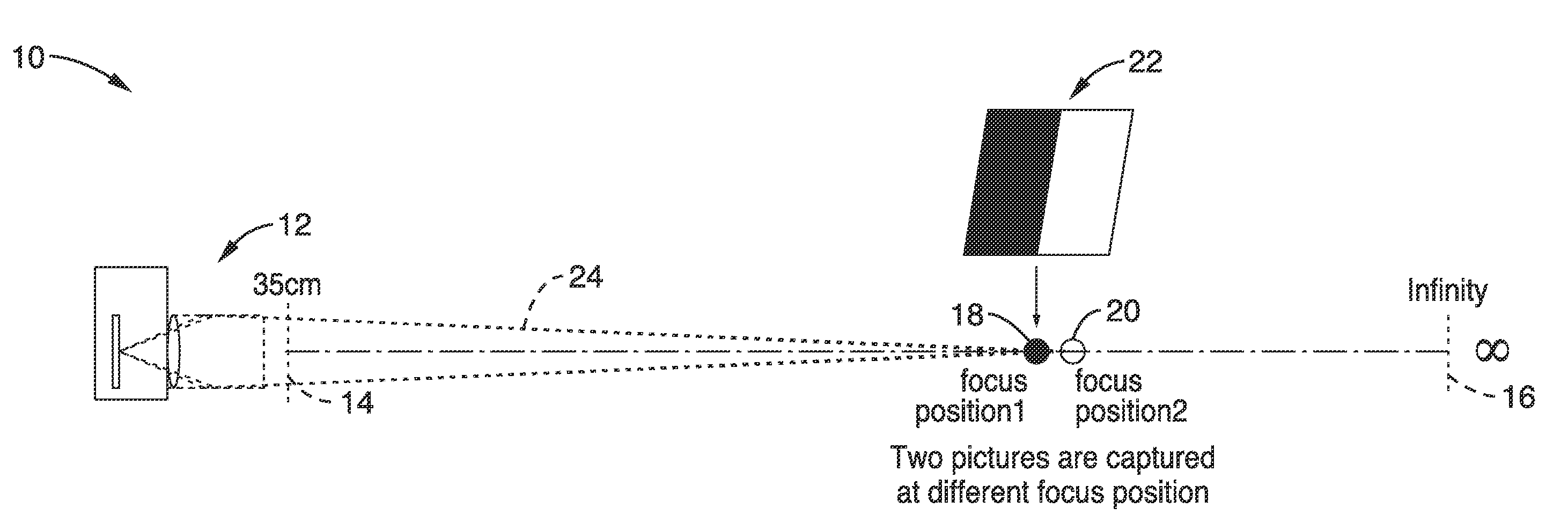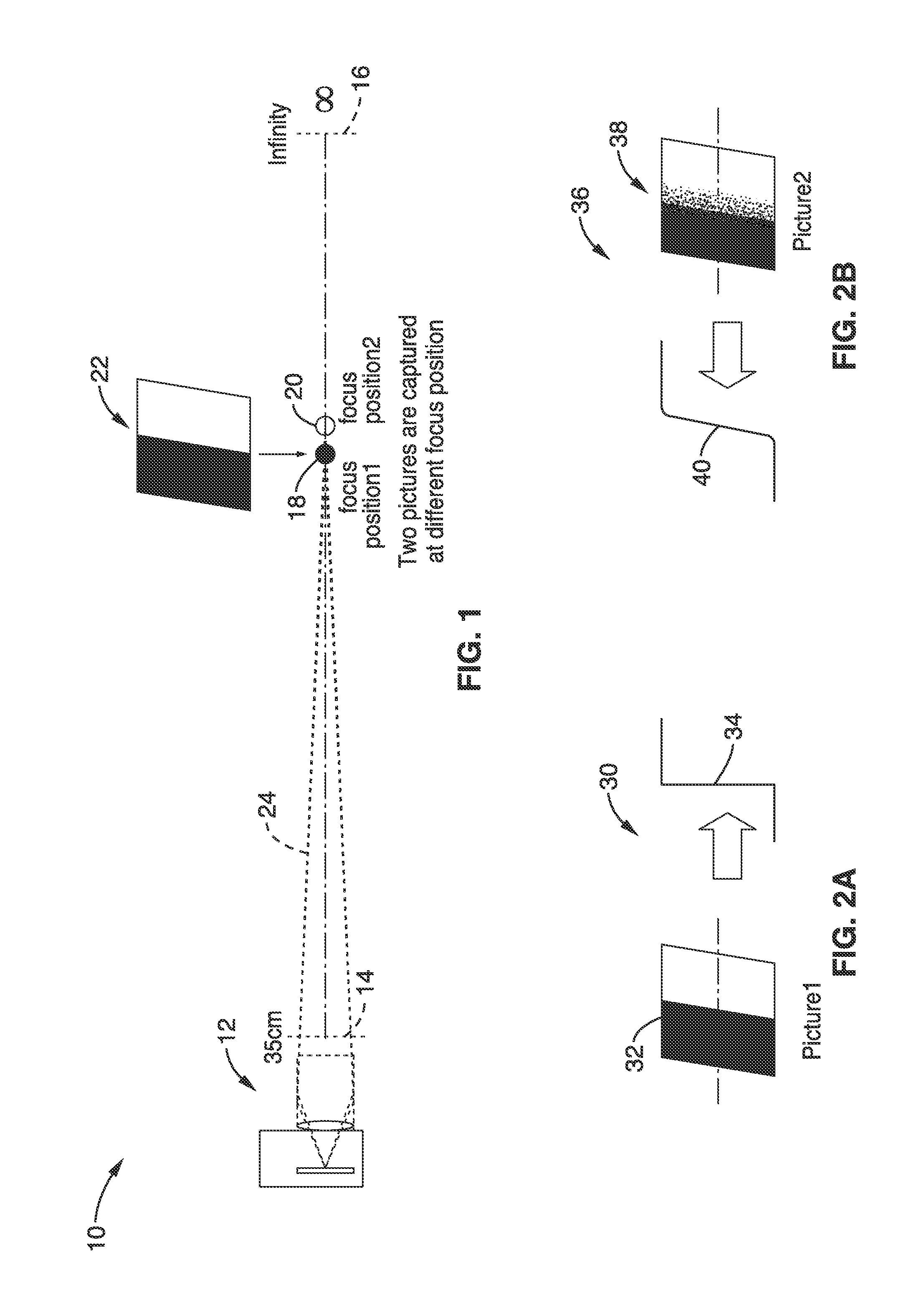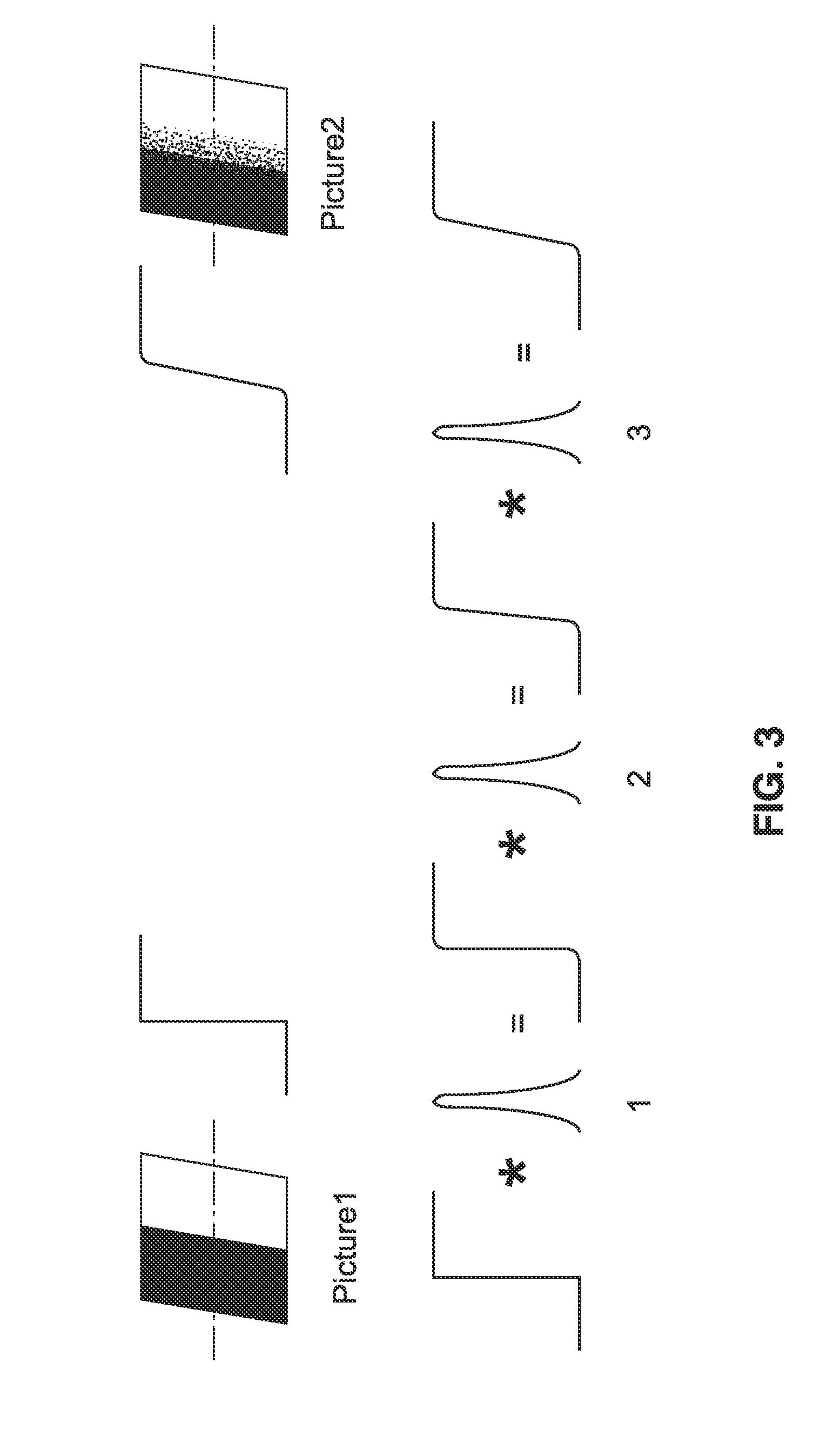Motion robust depth estimation using convolution and wavelet transforms
- Summary
- Abstract
- Description
- Claims
- Application Information
AI Technical Summary
Benefits of technology
Problems solved by technology
Method used
Image
Examples
embodiment 10
[0074]FIG. 1 illustrates an embodiment 10 in which multiple images are captured of a calibration target (or calibration subject), at different focal positions (subject-distances) when collecting a data set for a given imaging apparatus (e.g., specific embodiment, make or model of camera, or a family of cameras using the same / similar optical imaging elements). Collecting the data set comprises a characterization process for the camera-lens system at a given magnification setting (lens at a fixed focal length, zoom setting). An imaging device (camera) 12 is shown which can focus from a minimum focal length 14 on out to infinity 16. Minimum focal distance 14 (e.g., in this case 35 cm) is shown as well as focus at infinity 16. According to the invention, the focus converges to first focal position 18 and then to a second focal position 20, upon a calibration target 22, such as step-edge image, slate, graticule, or similar target having known optical characteristics, along focal path 24....
embodiment 1
[0144]2. The apparatus of embodiment 1, wherein said focus matching model is based on imaging calibration targets obtained at different focal lengths.
[0145]3. The apparatus of embodiment 1, wherein programming executable on said computer processor is configured for performing said convolutions by at least one size of convolution kernel.
[0146]4. The apparatus of embodiment 1, wherein programming executable on said computer processor is configured for determining said differences of wavelet variance in response to a determination of absolute wavelet differences.
[0147]5. The apparatus of embodiment 1, wherein programming executable on said computer processor is configured for determining said wavelet variance in at least one wavelet subband and at least one wavelet transform level.
[0148]6. The apparatus of embodiment 1, wherein programming executable on said computer processor is configured for determining said wavelet variance in all wavelet subbands in at least one wavelet transform ...
embodiment 7
[0150]8. The apparatus of embodiment 7, wherein coefficients of the polynomial function are stored in said memory.
[0151]9. The apparatus of embodiment 1, wherein programming executable on said computer processor is further configured for performing histogram matching of the object images to reduce noise from outliers between focal positions prior to inputting the blur differences into the focus matching model.
PUM
 Login to View More
Login to View More Abstract
Description
Claims
Application Information
 Login to View More
Login to View More - R&D
- Intellectual Property
- Life Sciences
- Materials
- Tech Scout
- Unparalleled Data Quality
- Higher Quality Content
- 60% Fewer Hallucinations
Browse by: Latest US Patents, China's latest patents, Technical Efficacy Thesaurus, Application Domain, Technology Topic, Popular Technical Reports.
© 2025 PatSnap. All rights reserved.Legal|Privacy policy|Modern Slavery Act Transparency Statement|Sitemap|About US| Contact US: help@patsnap.com



